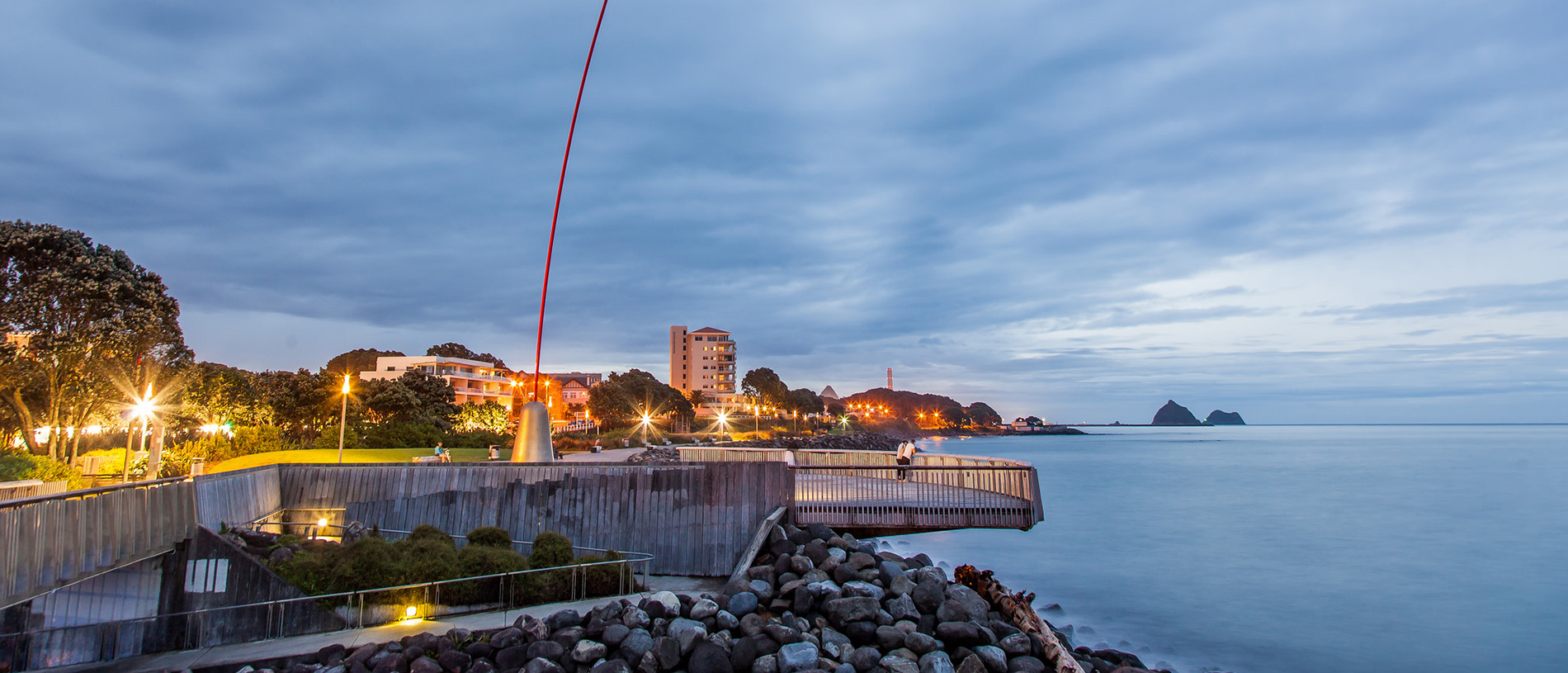
New Plymouth's Coastal Walkway
The Coastal Walkway is a 12km journey to add to your own journey, a promenade par excellence that hugs the sea and grabs your senses all way along the New Plymouth coastline.

New Plymouth started life as the port servicing the mellow, fertile dairying country surrounding Mount Taranaki.
Not that there was any kind of natural harbour there, but compared with the rest of the inhospitable weather edge of the central North Island, the comparative shelter offered by the Sugar Loaves – the set of little islets just off from the city – was a natural choice.
Besides dairying, New Plymouth has become the centre of New Zealand’s indigenous petrochemical industry, such as it is. Crude oil was first discovered at Moturoa Beach in 1865, where locals had long noted an oily ooze wherever they kicked rocks aside on the foreshore.
Over the next 100 years, oil was sporadically extracted from the ground and sold locally under the brand Peak Petroleum, the advertising featuring a likeness of Mount Taranaki.
By the time crude production had petered out in 1972, interest had shifted offshore into the North and South Taranaki Bights, which are now dotted with drilling rigs tapping substantial natural gas and condensate reserves far below the sea floor. Just north of the city, one plant synthesises petrol from natural gas, and another manufactures methanol.
On the back of these two industries, New Plymouth has grown into a funky little city. The view from just about everywhere is dominated by Taranaki’s paternal presence.
The heart of town is graced by the beautiful Pukekura Park, which hosts the annual WOMAD (World of Music and Dance) Festival, attracting indigenous and folk musicians from around the globe.
The formerly bleak, windswept black sands of the city’s foreshore have lately been extensively developed into a walkway, with a number of points of interest dotted along its seven-kilometre length. Starting from the eastern or Golf Club end, you’ll have access, should you choose to avail yourself of the opportunity, to the surf beaches at Fitzroy and East End.
On the central section of the walkway in front of the city, you can admire the most distinctive of New Plymouth’s many pieces of public art – the 45 metre Wind Wand, a kinetic contraption designed by internationally noted sculptor, Len Lye, to bend before the wind, of which there is seldom a shortage.
Here, too, are the city’s famous Puke Ariki Museum – named for the pā that stood near this site in pre-European times – as well as the striking Len Lye Centre and the excellent Govett-Brewster Art Gallery.
Inland from these amenities are cafés, restaurants and bars and a 7km walk easy enough to feel you’ve earned a cold one.
Welcome to Taradise.